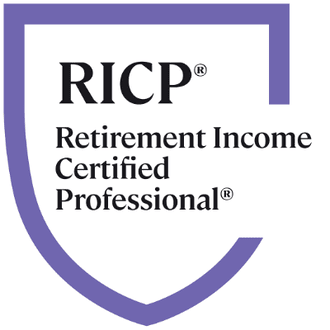
How to Maximize Your FERS Pension
FERS Background Information
The Federal Employees Retirement System (FERS) is a vital component of financial planning for federal civilian employees. Understanding how to navigate and maximize FERS benefits is crucial for ensuring a secure and comfortable retirement. In this guide, we'll explore key strategies and considerations to help federal employees make the most of their FERS retirement coverage.
There is the three-legged stool of retirement benefits working in the federal government. The three are the Basic Benefit Plan or the federal government pension, the Thrift Savings Plan or TSP, and Social Security. This blog post focuses on the Basic Benefit Plan under the Federal Employees Retirement System.
FERS Pension Calculation
The FERS Basic Benefit Plan, or pension, is calculated by taking the length of creditable service, multiplying it by a percentage (usually 1% or 1.1%), and multiplying it by the “high-3” average pay. The 1% is used for under age 62 at separation for retirement, or age 62 or older with less than 20 years of service.
If the federal employee retires after reaching age 62 with at least 20 years of creditable service, and in this case, the percentage increases to 1.1%. These three years are usually your final three years of service but can be an earlier period if your basic pay is higher. Your basic pay is the basic salary you earn for your position.
As a result of more heavily weighing the three years of your highest pay to maximize the pension benefit makes sense to retire after you get the highest pay in the federal government. In addition, to maximize the benefit, you should try to work until age 62 and have 20 years of service to get 10% more to your lifetime pension income!
FERS Minimum Retirement Age
The FERS Minimum Retirement Age (MRA) is the earliest age at which a federal employee can retire and receive immediate retirement benefits without a reduction for early retirement. The MRA varies based on an individual's year of birth and is an important factor in determining when federal employees can start drawing their pension.
Here are key points related to the FERS Minimum Retirement Age:
-
Early Retirement Reduction:
- If you choose to retire before reaching your MRA, your FERS pension will be subject to an age-based reduction. The reduction is 5% for each year you are under age 62.
-
Full Retirement Age (FRA):
- FERS employees who retire at their MRA with at least 30 years of service can avoid the age-based reduction. However, retiring before reaching 30 years of service will still result in a reduction.
-
Deferred Retirement Option:
- If you delay your retirement beyond your MRA, you can accrue additional service credit and potentially increase your FERS annuity. This is known as a deferred retirement option.
-
Social Security Eligibility:
- Your MRA is separate from Social Security eligibility. While you can retire under FERS at your MRA, you may not be eligible for full Social Security benefits until a later age, depending on your year of birth.
-
Health Insurance Considerations:
- Federal employees who retire before age 65 (when Medicare eligibility begins) need to consider health insurance coverage. The Federal Employees Health Benefits (FEHB) program provides options for health insurance in retirement.
Survivor's Benefit
The survivor's benefit is also significant to consider with the pension. This is especially important since you can leave your surviving spouse perhaps half of your pension when you pass away, assuming before your spouse. With a 50% survivor's benefit, the pension annuity is reduced by 10%.
The survivor's benefit is often overlooked when considering your FERS pension benefit. For a slight 10% reduction in your monthly annuity payment, you can give your surviving spouse 50% of your annuity.
Cost of Living Adjustments
Cost of living adjustments or COLA is an essential benefit of the pension. Essentially, as the cost of living goes up for basic items such as groceries, gas, and so forth, your purchasing power gets eroded.
The FERS pension has a cost of living adjustment. Generally, it would be best if you were 62 years old to increase the cost of living. Currently, inflation is running at 40-year highs and may not go down for a while.
The cost of living adjustment is an integral part of the pension since this is one of the significant issues with many pensions that are not adjusted for inflation. So your purchasing power gets eroded over time, and you need to make up for the shortfall somewhere else in your budget.
How to Maximize FERS
The top four ways to maximize your FERS pension are to:
1) Retire with 20 years of service and at least age 62. If you can retire with more than 20 years of service, your monthly pension benefit will increase. But try to maintain a minimum of 20 years and age 62.
2) Retire with the highest three years of pay in your 60s. Work on getting your big promotions in the federal government before you retire. This way, your multiple is on a higher last three years of salary.
3) Do not take the pension benefit until you reach age 62 to maximize the COLA adjustment. Instead, take advantage of the COLA adjustment. Then, retire if possible at age 62 or later.
4) Consider the survivor's benefit if married. You can protect your spouse with a 50% monthly annuity for a slight reduction in your monthly annuity.
These four broad suggestions do not apply to all situations, so you should consult with a financial planner to get a recommendation for your circumstances.
Conclusion
Maximizing FERS benefits requires careful planning and a proactive approach to retirement. By optimizing TSP contributions, understanding Social Security, and taking advantage of additional FERS components, federal employees can pave the way for a financially secure retirement. Regularly reassess your retirement strategy, stay informed about FERS updates, and seek professional advice when needed to ensure you're making the most of this valuable retirement system. Reach out to me on the contact page and schedule a meeting to discuss how the FERS pension fits your retirement plans.
*This content is developed from sources believed to be providing accurate information. The information provided is not written or intended as tax or legal advice and may not be relied on to avoid federal tax penalties. Individuals are encouraged to seek advice from their tax or legal counsel. In addition, individuals involved in the estate planning process should work with an estate planning team, including personal legal or tax counsel. Neither the information presented nor any opinion expressed constitutes a representation of a specific investment or the purchase or sale of any securities. Asset allocation and diversification do not ensure a profit or protect against loss in declining markets.





